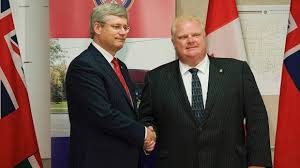I am not a big fan of the accepted wisdom that politics happens on a left/right continuum. That creaking old paradigm does not mean much to most of the electorate. Perhaps I should be a bit more nuanced with that observation? While there are many Canadians who view themselves as ‘left’ or ‘right’ wing, there are far more Canadians who will give their electoral support based on the issue or issues that affect them personally, irrespective of ‘left’ or ‘right’ bias. According to the accepted wisdom, the Conservative Party is the party of the Right. Their base is therefore an ideologically motivated monolith, that can be counted on to vote CPC. On the ‘left’ flank of the Liberals sit the NDP. Again, the accepted wisdom is that the NDP’s ideologically motivated ‘base’ can be relied on to vote NDP. In the ‘centre’ sit the Liberals, who alternate between left and right in a morally bankrupt dance to win power at any cost. Well I am sorry, but when your definition of what motivates people captures no more than a third of the electorate, it is time to dump it.
And dumping the paradigm seems to be what is on Trudeau’s mind nowadays. In the early days of the Liberal leadership race last year, Justin Trudeau came out publicly in support of the NEXEN takeover in the Oil patch. Shortly thereafter, Trudeau announced, (on a visit to Alberta no less) that he supported the Keystone Pipeline, but not the Northern Gateway pipeline through the Rockies. The shock value of a Liberal leadership contender reaching out to Albertans and a key CPC constituency was good for a lot of headlines, but it was also revealing inasmuch as it is the first attempt to directly target a true blue Tory constituency since the Reformers co-opted the PC’s. Since then we have seen Trudeau reaching out to libertarians by supporting Marijuana legalisation. While many would assume that legalising marijuana is anathema to all Conservatives, the fact is that there are plenty of Conservatives who will support the policy, irrespective of party lines. If you still doubt that Trudeau is aiming squarely at the Conservatives, he publicly threw down the gauntlet in his speech to the Liberal policy convention yesterday. “Conservative voters are your neighbours, not your enemies, ‘these are good people,’ Trudeau tells convention”
In my opinion, this is strategically sound. Past elections have featured the Conservative Party shaping the issues, and defining the Liberals and Dippers in the public eye. The Conservatives have spent untold dollars and volunteer hours building their constituencies one issue at a time. By the time the election rolls around, the Conservatives have had another large slice of the electorate in their back pocket, leaving the Liberals desperately trying to win their supporters back. And whilst the Liberals are scrambling to stand still, the CPC unleash the hounds and pick and choose who, how, and when to attack. Whatever happens over the coming year, the Conservatives are going to have to watch their back. They will surely try to expand their appeal, and further build their constituencies, but they are going to have to balance TWO priorities. Every time they go to a podium, they are going to have to think hard about whether they are trying to win over new supporters, or circle the wagons around one of their existing ‘base’ constituencies.
If Trudeau has made the best strategic decision by targeting the CPC support issue by issue, the tactics leave something to be desired. When the CPC goes after a constituency, they go after it retail. They reach out to community groups, they leverage their paid AND earned media, and they never stop identifying individuals who are committed to supporting them on a specific issue. This is so important because it enables them to target their supporters and communicate with them directly, one on one to lock down their support as soon as the writ is dropped. Voters are invited to sign petitions, to donate, to join CPC friendly community groups, and make themselves known to the CPC by name, address, phone number, and most importantly, by email address. The benefits of this are obvious. They can counter any message that is delivered by broadcast media by narrowcasting their response directly to the constituency ‘in play’. They can do this immediately without spending any money just by clicking ‘send’ on an email blast. What is so disappointing about the Liberals failure to harvest direct contacts amongst the electorate is that it is ridiculously easy to do so. All that is needed is to ASK Canadians to sign a petition, or register as a supporter every time you present an idea publicly. When General Leslie calls for fixing military procurement, all he needs to do is invite Canadians to sign on to support his proposal, and another pile of issue specific supporters are loaded into Liberalist. Whether it is Scott Brison talking about the Conservative Deficit, or Marc Garneau, communications are ALWAYS an opportunity to solicit actionable contact data from the electorate. Even if it is only a few hundred prospective supporters at a time, there is no reason whatsoever not to be adding hundreds of thousands of new supporters to the database every year.
Vote for this post on Progressive Bloggers!
Filed under: Engaging Supporters, Political Strategy | 1 Comment »










